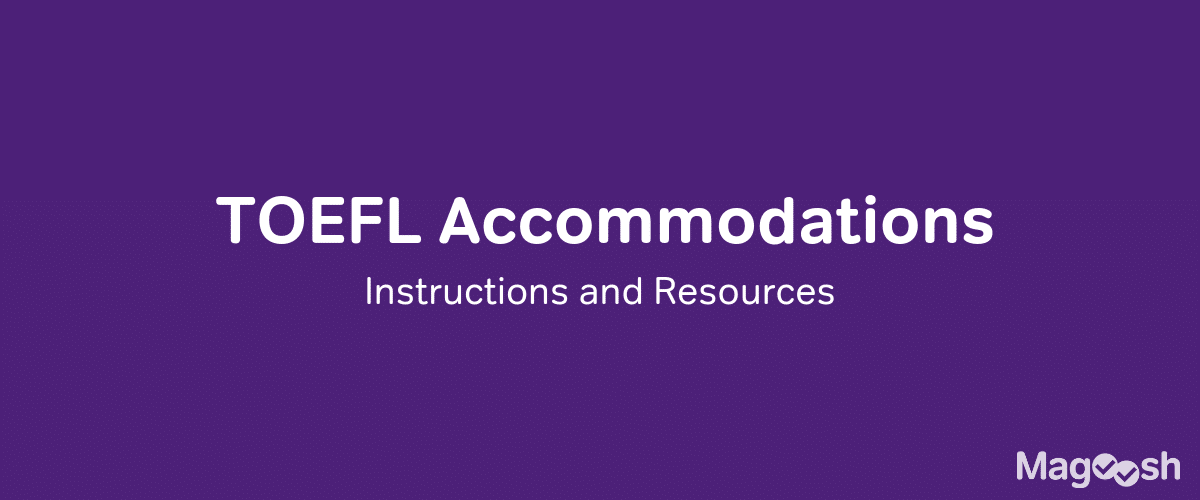
So you need to take the TOEFL (Test of English as a Foreign Language). But when should you take it? This depends a lot on which TOEFL dates are available, of course. And it also depends on your own study needs and prep timeline. Below, we’ll give explain where to find TOEFL test dates near you in 2024.
We’ll also give you some advice on how to choose the TOEFL exam date that’s right for you, including how to register for the TOEFL Home Edition. Click on a TOEFL test date topic from the navigation table below to skip to that section, or continue scrolling down to review all our TOEFL exam dates information.
Click the links below to go directly to that section!
- TOEFL Test Dates and Locations
- Which TOEFL Test Date to Pick: A Practical Guide
- When You Should Take the TOEFL
- TOEFL Score Expiration
- Takeaways
TOEFL Test Dates in 2024
Depending on your location, the TOEFL iBT is available up to 170 times a year. To find the dates available at locations near you, go to the ETS Center Search page and enter your location as well as the two-month period when you want to take the test – if you don’t know, you can scroll through to see multiple months.
However, a more convenient option is the TOEFL Home Edition, which ETS recently announced is here to stay. This is available 24 hours a day, 4 days a week. More on the Home Edition below!
How to Choose TOEFL Test Dates
TOEFL Availability in Your City or Region
As you think about the exam date you’ll choose, the first thing test takers should consider is the exam’s availability. As I mentioned above, not all exam dates are available in a given location. Check to see not just when a TOEFL exam might be available, but also where the TOEFL is available.
The nearest test center on a given exam date may be an hour or two away from you by travel… or possibly even further away. At the same time, other exam dates might be offered nearer to you. On the right dates, the TOEFL may be available in your home community, or nearby. Be sure to check on both locations and test dates. Again, you can find this information on the official TOEFL registration website, or by logging into your ETS TOEFL account and looking at the online registration system that way.
TOEFL Home Edition Test Dates
In 2020, ETS began offering the TOEFL Home Edition, so that test-takers can take the exam safely from their own homes. Soon after, ETS made this test taking method permanently available. The TOEFL Home Edition is identical to the TOEFL iBT, except you’ll be taking it virtually. The exam has a live proctor monitor the exam through the computer and microphone on your device.
Currently, the TOEFL Home Edition is available throughout the world, but does have specific requirements in mainland China. Note that you’ll need a computer with certain tech specs to take the exam. Be sure to carefully review these before you sign up for the test – if you don’t meet the requirements on test day you won’t be able to take the test or get a refund!
To schedule your TOEFL Home Edition exam, you’ll need to have an account with both ETS and ProctorU. ProctorU is an organization that works with ETS to ensure that the tests are taken honestly and can count as valid assessments. Here’s the process:
- Log in to your ETS TOEFL account (or create an account and log in).
- Click the blue “Register/Find Test Centers, Dates” bar in the middle left of the screen. Follow the prompts to click on the Special Home Edition and pay the registration fee by debit card or credit card.
- After you pay the test fee, you’ll receive an email from ProctorU. Follow the instructions in that email to register for an account with them and schedule your actual TOEFL Home Edition exam.
When You Should Take the TOEFL
If you’re planning on beginning grad school within a year, you will want to choose a date to take the TOEFL relatively soon. Many United States college and graduate school programs require applications a long time before the start of the semester. Sometimes applications are due as many as 10 months ahead of time, and you’ll want to make sure you leave enough time to potentially retake the test. But, this depends on what programs you are going to apply to and guidelines are different at some foreign universities. Check the websites of the schools you’re interested in. If you aren’t sure about when applications are due, you can always email the admissions office.
With this in mind, be sure you’re aware of application deadlines. Unless you’re extremely confident in your ability, give yourself enough of a cushion before your deadlines that (a) you can re-take the test if needed, and (b) there will be plenty of time to iron out any problems that may crop up with the delivery of score reports or test scoring.
Most undergraduate higher education programs in the US have deadlines in the late fall or winter before you intend to start (for a program that begins in the fall). The deadline may be different if you are an international student, if you want to be considered for scholarships, or if you’re applying early action/early decision. To be sure that you’ve got the correct date, confirm with an admissions counselor at your school of choice.
When you should take the test ultimately depends on how soon those deadlines are. But you should also consider how long it will take you to fully prepare for the TOEFL. Generally speaking, if you’re going to have to take the test, it should be at least a couple of months from when you start studying. You want time to prepare fully and take a few TOEFL sample tests. You don’t want to rush through your test prep; language study takes time to master and you want to give yourself the best chance possible to crush your score goals.
Let’s imagine two scenarios to illustrate good timing:
Scenario 1 – Applying to Schools Eventually
You are applying to a graduate school program or college eventually, maybe next year. This is a good opportunity to check your ability now. Study for the TOEFL for one or two months, practicing the format and strategies as much as possible. Then take the test. This might be many, many months before your applications are due, but that’s okay.
This is because TOEFL scores rely on two things: general academic English language ability and test familiarity/strategy. General English ability takes a long time to improve. Strategy can be learned more quickly. So you want to improve your strategy as much as possible and take the test relatively soon. This way, you can see whether your goals are realistic.
If your score is lower than you expected, you can adjust your plan. You will have to improve your general English ability, and that takes time. If your score is at the level you want, then that’s great. You can spend your time in the next months improving your application in other ways, such as preparing for other standardized exams for admissions.
Scenario 2 – Applying to Schools Soon
The application deadline for your program is within months. If this is the case, then you want to check out those TOEFL test dates now, and schedule the test for a time near the deadline. Give yourself as much study time as possible. It often takes months to learn how to take the TOEFL well and get the highest score you can. And more than a month is ideal. So set aside the maximum available prep time, within your due date.
It’s not easy to make a plan like this. The main things to consider when scheduling are these:
- Give yourself enough time to study for the test, then take it as soon as you feel comfortable with the format and content. I’m sure that many of you want to take the test as soon as possible so you can stop worrying about it and get on with your life. I get that. But don’t rush it. If you do, you run the risk of having to retake or reschedule TOEFL dates. Or worse: not getting the score you need to go to the school you want. I usually tell my students to register for a date at least a month in advance.
- If your scores are too low in practice (particularly on practice tests), but you’re familiar with the format/exam pattern, then you need to work on content familiarity. This means you need to improve your general academic English ability. This will take more time. How much time? That depends on your level of English now and your goal score.
- The TOEFL is not cheap. Ideally, you want to take it just once. If you need to retake, be sure that you give yourself enough time to improve your scores before you take the test again. The second test should be the last one, ideally.
- Are you taking an intensive English or TOEFL prep course? Go ahead and plan on taking the test within a few weeks of finishing it. Are you going to have a break from school that will be a good chance to brush up? Take the test at the end of the break.
- Are you going to have a break from school during which you will not spend time doing anything remotely intellectual? Then take the test right before the break.
- Are you from a non-English-speaking country, but studying abroad currently in an English-speaking community? Great! Take the test before you leave or within a few weeks of returning home. Give yourself every chance to succeed.
TOEFL Score Expiration
TOEFL scores are good for 2 years after your test date. After that, you’ll have to re-take the exam before applying to your program. So even if you’re studying abroad right now and you feel invincible in English, if you still have a few years before you apply to college, you should probably just wait until you’re in that two-year window, unless you want to take the language proficiency test now for practice or personal reasons.
Takeaways
A lot goes into deciding when (and where) to take your TOEFL exam. Taking a free practice test today will help you see how much work you’ll need to do to get to your target score. Once you have an idea of your score baseline, a tried and true TOEFL study plan will help you reach your goals. Consider a Magoosh Premium Plan for more help acing the exam.





